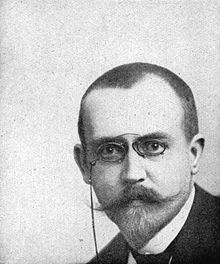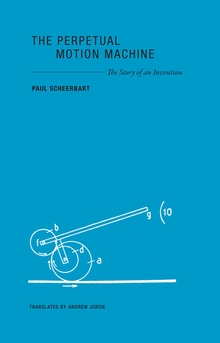Back in the day when I started to write fiction, I took a class called Gender & Writing. I must’ve been 21 or so. We read a lot of things, but what’s pertinent to this post is Virginia Woolf. The professor told us about her journals. We read some excerpts. They blew me away. And instantly, because of the egoist in me, I started to worry about people finding my old journals, how stupid I would seem, banal and delusional. Then, I felt moronic and delusional (again) for thinking I’d be so important that future scholars would be rifling through my old journals. Regardless, I stopped journaling by hand, not that I did much of it anyway, but reading through those journals today, I cringe at my youth and the way I made melodramas out of nothing.
Obviously, no one has bothered going through my journals, but my greatest fear manifested when I started reading Paul Scheerbart’s The Perpetual Motion Machine. Part journal, part delusional dream, Scheerbart’s beautiful little book narrates his toiled process of inventing the world’s first perpetual motion machine.
Let me back up, if you don’t know the name Paul Scheerbart, that’s ok. I didn’t either, but he was a proto-Dadaist, a novelist, playwright, poet, and his discussions of glass architecture played a role in Walter Benjamin’s The Arcades Project. But back in January 1908, he was poor writer dreaming of money, fame, and glory. In many ways, I applaud how he understood that he would not attain these goals through his writing, so he found another way: invention!
He came up with hundreds of models, at first very simple then increasingly complicated, using spokeless wheels and weights and pulleys. Here are a few:
 After coming up with the first model, he wrote:
After coming up with the first model, he wrote:
All the games of potentates are nothing compared to this wheel-story. It makes everything possible—especially electric illumination at night, which will transfix the world. This light-story has implications that are almost unimaginable. We can, indeed, distribute electricity extravagantly, keeping everything lit up in manifold colors, in every place of activity and of rest. (12)
A few days later, still undeterred, Scheerbart dreams:
The construction of canals in the Sahara could well induce the entire dessert to bloom.
More generally: if one could, at will, direct all the world’s rivers into new courses, a fabulous increase in the fertility of the Earth would be achieved.
Therefore: cultivation of the deserts in grand style.
Compared to this, the Panama Canal is a trifling affair.
It’s hardly worth discussing…
How I will laugh—if it works…
But maybe I won’t be laughing.
There’s something dilettantish about wanting to see everything immediately carried out in reality. (15)
Indeed, Scheerbart believed his invention would render utopia visions silly, despite his own utopian dreaming. He thought his perpet (short for perpetual motion machine) would solve all the world’s problems, though it would catalyze a great crashing of economies because natural resources such as oil would become obsolete:
It is certain that the perpet will also portend a great disruption of humanity’s way of life. One might well ask: has this great good fortune come too soon? Are we sufficiently ripe for this new artistic and godlike existence? Even a general overview of the consequences of this discovery still lies beyond our imagination.
Yet we must accept the whole thing, like a natural event, and we also have to come to terms with its harmful side effects.
The story will have the effect of a colossal earthquake—and much—much too much—will collapse in ruin. (55)
Governments would shower him with millions per year. And rarely, he would recognize the possibility of failure, though he welcomes it, but only because his invention is so great.
While reading his journals, I kept thinking what a fabulous novel this would be, if it were a fiction. It would depict an egomaniac, so clearly delusional, blinded by his own genius. It would show the unbridled self-delight of a man with an impossibly profound idea. It would be a narrative of failure, though a failure the reader finds pleasurable. We cannot like him. We root for his perpet to collapse under the weight of his ego. After all, Scheerbart spends nearly a quarter of the book laughing at physics as a science, how limited it is, how his invention would prove the entirety of the field not only wrong but also obsolete. If this book were a novel, I would applaud the fine writing. I would say the writer has portrayed one of the worst parts of humanity.
But this is not a fiction. And that changes everything.
Rather than praise the cleverness of the writer, instead, I must confront the reality that a real person thought these thoughts. It’s kind of like thinking A Million Little Pieces is a memoir versus a fiction, only, no, that doesn’t work at all.
I have to say, though, one of the most pleasurable things about this book is how Scheerbart believes the various versions of his perpet are so advanced that the Martians had invented it first! See, back in Scheerbart’s day, the best astronomers measured the power of a telescope by its ability to discern the gemination of the Canals of Mars.
 Astronomers far and wide claimed to see canals, large artificial canals that would prove extraterrestrial (and intelligent!) life. Then, one day, Giovanni Schiaparelli saw not just a sophisticated network of canals but two of them, side-by-side. Scheerbart believed the geminated canals were created by perpetual motion machines—just like the ones he was making!—and once humans could discover the perpet, they could interact with the Martians:
Astronomers far and wide claimed to see canals, large artificial canals that would prove extraterrestrial (and intelligent!) life. Then, one day, Giovanni Schiaparelli saw not just a sophisticated network of canals but two of them, side-by-side. Scheerbart believed the geminated canals were created by perpetual motion machines—just like the ones he was making!—and once humans could discover the perpet, they could interact with the Martians:
Someone once proposed digging the lines of the Pythagorean theorem on a colossal scale into the sands of the Sahara in order to give the Martians a comprehensible sign. Perhaps one may now contemplate setting up lines of perpets, at an expanded width of seven miles, as beacons across the desert.
How droll that such lines cannot yet be implemented…
I will also laugh if nothing comes of this story.
Then it would be proved once again that salvation is only to be sought in the imagination. (17)
By 1909, it would be proven that the Canals of Mars were an optical illusion. The doubling, or gemination, of the Canals were an even greater optical illusion. But Scheerbart didn’t know this in 1908, and it’s hard to say if he would’ve accepted it as truth in any case. (This was a pretty huge embarrassment for astronomy. Obviously.)
Paul Scheerbart’s The Perpetual Motion Machine (translated by Andrew Joron) is a delightful read. It’s the kind of book that makes you cringe while reading it. You want to shake Scheerbart and tell him to stop being so megalomaniacal. And yet, there’s something utterly pleasurable in watching man’s failure, especially a man with such brazen dreams.
Furthermore, the book itself is a gem. It’s published by one of my favorite new presses: Wakefield Press. They make beautiful little books, delicate and powerful (see my review of Perec’s An Attempt at Exhausting a Place in Paris here). Plus, they flaunt these super sexy French flaps. Plus, there are twenty-six figures of Scheerbart’s perpet designs, which are enjoyable, to me at least, to imagine how they could work but don’t.
This is the first time this book has been published in English. It’s hard for me to imagine that Scheerbart had wanted to publish it at all: a document documenting his failure and his grandeur.
So, after reading this book, I have deleted every single journal entry from my desktop—I’ve even gone so far to delete the application!—and yet, and yet, sure, I’ll let blog remain as virtual proof of my—like Scheerbart’s—raging ego.
Tags: canals of mars, journaling, paul scheerbart, wakefield press





http://xrl.us/bh8tjk
scheerbart is a really strange dude. i read his book on glass architecture and it definitely reads like many architecturally accessed utopian pipe-dreams, but it’s still ultimately interesting, full of bombast.
[…] a generally positive review of The Perpetual Motion Machine at HTML Giant, Lily Hoang says, “It’s the kind of book that […]
Hi Lily,
I’m not sure if we can say that this isn’t fiction…I’m thinking about the way Herzog doesn’t like to differentiate between his features and his documentaries…he says that it’s all film. So I feel like The Perpetual Motion Machine is writing — just as Scheerbart’s astral novels are writing.
But I’m glad you liked the book — I really loved it and have a slightly different take on it here:
http://bigother.com/2011/06/05/paul-scheerbarts-perpetual-motion-machine-some-thoughts-on-literature-energy/
Interestingly, the hisoria, these models, dating back one hundred years. It is easy to understand that the academic and engineering mecánca, relied on the principles of classical thermodynamics and is now tracked as guided, but this does not mean they are wrong, therefore, they buried the perpetual motion machine, before he was born, but if fully known principles apply now, any student can succeed in designing a true perpetual motion machine, it works. For sample a button, see:
http://en.calameo.com/subscriptions/1052457?o=5&w=DESC&Step=18&Page=0#paginationTop
cordially
Ramiro Augusto Salazar La Rotta, D.Sc
Colombia